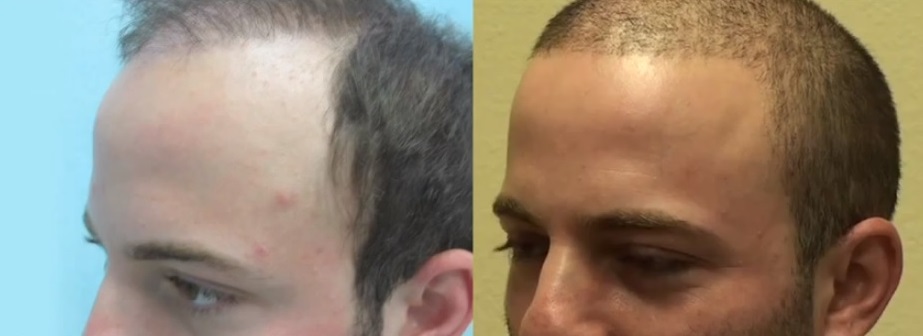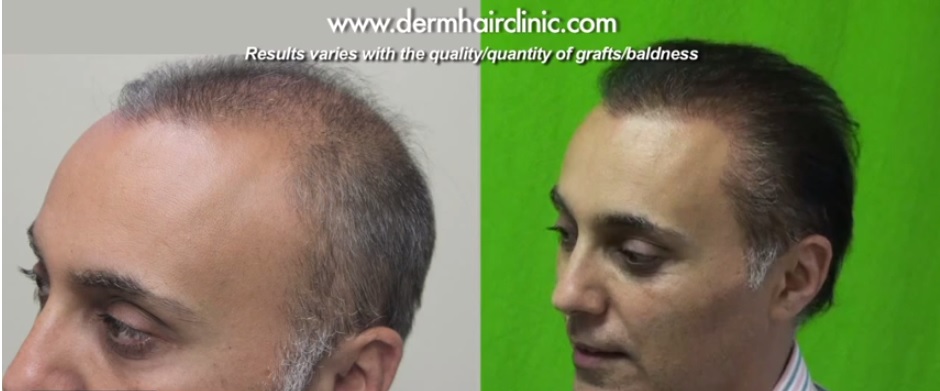Is any test required to determine if Your head or body hair hair can be extracted by UGraft?
[Updated] In patients of African descent, who possess tightly curly hair, a test is not required if using the UGraft as it has a punch component called UPunch Curl that extracts all tightly curled hair including in all Afro-textured hair.
Are female patients good candidates for UGraft using head or body hair ( BHT )?
Female patients often would require investigation for other treatable causes of hair loss. This requires the input of a skin and hair specialist (a dermatologist). Dr. Umar is board certified by the American Board of Dermatology, and is qualified to manage female patients with complaints of hair loss. Dr. Umar often receives referral of female patients from other physicians including other hair transplant doctors who are not certified dermatologists. Dr. Umar may require performing some tests to determine the cause of your hair loss and the best treatment options available.
What is the advantage of UGraft and Body Hair Transplantation – BHT ?
Hair transplant methods that utilize only head hair as donor resource (be it basic forms of FUE or Strip surgery) entail the redistribution of permanent hair from the back and sides of the head. This limits the donor supply to 5,000-7,000 hairs. In a significantly bald individual, only one tenth of the hair that has been lost can be replaced using this source. The result of the appearance of the hair transplant is often thin and cosmetically unappealing when this limited amount of donor hair is used. With UGraft, hair from the beard and body areas can be added to the donor pool in certain individuals. This vastly expanded donor pool makes it possible to restore severely balding men whose head donor supply alone would have been unable to meet their overall needs.
Can a bald area of the scalp/head be restored using body hair that is different in color, texture & thickness?
Generally, body or beard hair would retain its nascent characteristics after transfer to a balding scalp. It is best to assume that no change would occur in the native characteristic of the hair that is relocated. That said, Dr Umar has observed anecdotal evidence of possible recipient area influence with minimal length increase and is some cases reversal of greying of hair after it has been transplanted from its original body or beard location to the head.
In your opinion would body hair be an appropriate source of donor hair to augment the transplant?
Body hair is not used as a first resort. It is resorted to in patients with qualified body/beard hair when there is a relative or absolute lack of head donor
How many days would it take to heal to the point that scarring is not visible (I can be seen without a hat). One week? Fourteen days?
Scabs in recipient typically resolve in 7-14 days. Donor area on back and side of head would typically resolve within 7-10 days.
Question: I’m from UK. I want a hair transplant by using body hair. Do you have any branch in UK, London?
I do not have an office in the UK. However, I routinely treat patients from the UK and other parts of the world. My clinic is located within 20 minutes drive of Los Angeles international airport and there are several hotels within 1 block of my clinic for the convenience of my patients. Most of my international patients have been quite impressed by the ease of the whole process.
Out of town patients have found this page on my website to be useful: ACCOMMODATIONS & TRAVEL
SPECIAL NOTES
Hair Length:
There might be marginal gains in length. I have not observed in my experience of over a hundred thousands transplanted body hair findings that supports the report of Dr Ray Woods and Angela Woods of a 4 fold increase in transplanted body hair.
Hair Color:
i. In lighter hair colored individuals (blonds, brown, red etc) it is typical for the body hair in these individuals to be of darker hue when compared to the head hair. This difference is mostly a result of difference in exposure of the different body locations to inclement weather conditions eg sun rays, chemicals in the air etc). These inclement weather factors have a bleaching effect on exposed hair (eg head hair). It should come as no surprise thus for hair from covered area (eg chest) that is of darker hue to gradually assume the bleached or lighter look of the surrounding hair over time and several hair cycles as this hair becomes exposed to the same inclement weather conditions to the same degree as the remaining head hair.
ii. Grey hair: I would again advice that it be assumed that transplanted grey hair would remain grey in the planning stages of a hair transplant procedure including that which involves body hair transplantation. This is despite one example in my website, where I reported the first case of spontaneous change in transplanted grey chest hair in one of my patients. Whereby grey hair that was transplanted from the chest grew out mostly darkly pigmented hair.


